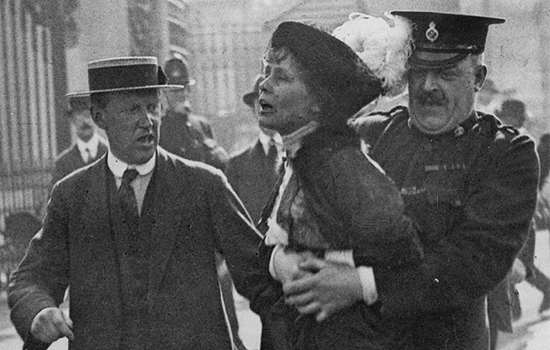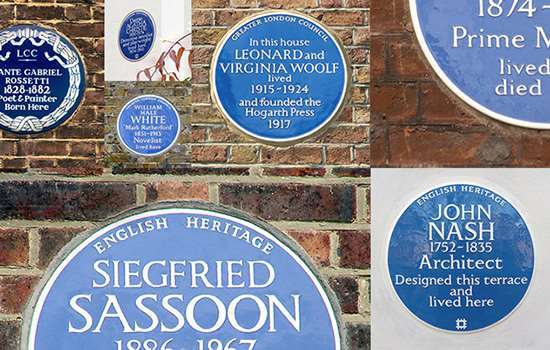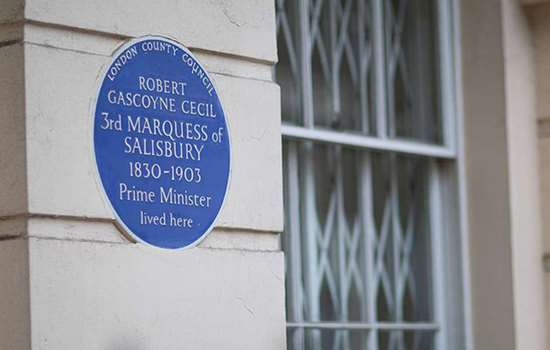COMPTON-BURNETT, Dame Ivy (1884–1969)
Plaque erected in 1994 by English Heritage at 5 Braemar Mansions, Cornwall Gardens, Kensington, London, SW7 4AF, Royal Borough of Kensington and Chelsea
All images © English Heritage
Profession
Novelist
Category
Literature
Inscription
Dame IVY COMPTON-BURNETT 1884–1969 Novelist lived here 1934–1969
Material
Ceramic
Dame Ivy Compton-Burnett was a novelist acclaimed for her dialogue-packed books exploring domestic power struggles. A plaque at 5 Braemar Mansions marks the home where she lived with her companion and wrote many of her best-known works.
Ivy Compton Burnett was born in 1884 in Pinner, and her family life was scarred by a series of tragedies. She was the eldest daughter of the seven children from her homeopathist father’s second marriage (he had five children from a previous marriage too). Her father died in 1901, at which point Compton-Burnett’s mother, who she considered an overbearing social climber, dressed all the family in mourning black for a year, even the baby in the pram.
Compton-Burnett left to study classics at Royal Holloway in 1902, but her brother died soon after, and then she was made to return and help care for her six younger siblings. She became their primary caregiver in 1911 when her mother died.
Like her mother, Compton-Burnett was a despotic ruler of the household. Her sisters left in 1915 and went to live with pianist Myra Hess in London. Compton-Burnett’s most beloved brother was killed at the Somme during the First World War and her two youngest sisters ended their own lives on Christmas Day of 1917.
In 1918, Compton-Burnett fell prey to the influenza epidemic and she collapsed physically and mentally. As she recovered, she wrote Pastors and Masters, the first of her post-war novels, which was published in 1925 and described as ‘a work of genius’ in The New Statesman. From this point, she published a novel every two or three years until shortly before her death.
5 Braemar Mansions and recognition
In 1934, Compton-Burnet moved into Flat 5, which is in a block dating from the 1870s, originally called ‘Cornwall Mansions’, with her companion Margaret Jourdain, a furniture expert. Jourdain had helped Compton-Burnett to recover from her breakdown and the two had lived together from 1919.
Compton-Burnett liked to write in one of the armchairs that sat either side of the fireplace that she and Jourdain had brought with them from their previous home. Their home was spartan, but her window boxes were always bright with colour.
Compton-Burnett hosted ‘awed’ admirers for tea at Braemar Mansions and stayed at the address for the rest of her life. Her landlord she described as ‘frightfully friendly … I believe it’s because of the enormous rent I pay him’.
In 1935, Compton-Burnett’s sixth novel, A House and its Head, was published. Introducing a 2021 reprint of this work, Hilary Mantel described it as ‘the merriest tale of human depravity’. Contemporaries also recognised Compton-Burnett’s skill; Virginia Woolf admired the ‘bitter truth’ of her writing.
Compton-Burnett wrote 19 novels in total. She won the James Tait Black Memorial Prize in 1955 and was made a dame in 1967. She died at the flat in 1969.
Relationships and sexuality
It is unclear whether Compton-Burnett had a sexual relationship with Jourdain. She described herself and Jourdain as ‘neutrals’. However, their friend Herman Schrijver considered that ‘their relationship was a marriage’. Compton-Burnett was heartbroken when Jourdain died in 1951.
Compton-Burnett later had a significant relationship with Madge Garland, Vogue editor and founder of the School of Fashion. She was described as ‘besotted’ by Madge, and the two travelled together until Compton-Burnett died.
Compton-Burnett’s novels featured homosexual relationships, including lesbian clasps and gay romances. Her writing was, for its time, relaxed about such relationships: one of her characters observed that ‘most people do’ have same-sex interests.
Further Reading
- Patrick Lyons, ‘Burnett, Dame Ivy Compton’, Oxford Dictionary of National Biography (2004) (access with a UK public library card)
- Stuart Jeffries, ‘Rediscovering Ivy Compton-Burnett’, Royal Literary Fund (June 2024) (accessed December 2024)
- Kay Dick, ‘A Great Achievement’, Literary Review (June 1984) (accessed December 2024)
- IM Stewart, ‘The Chair She Sat On’, London Review of Books (July 1984) (accessed December 2024)


